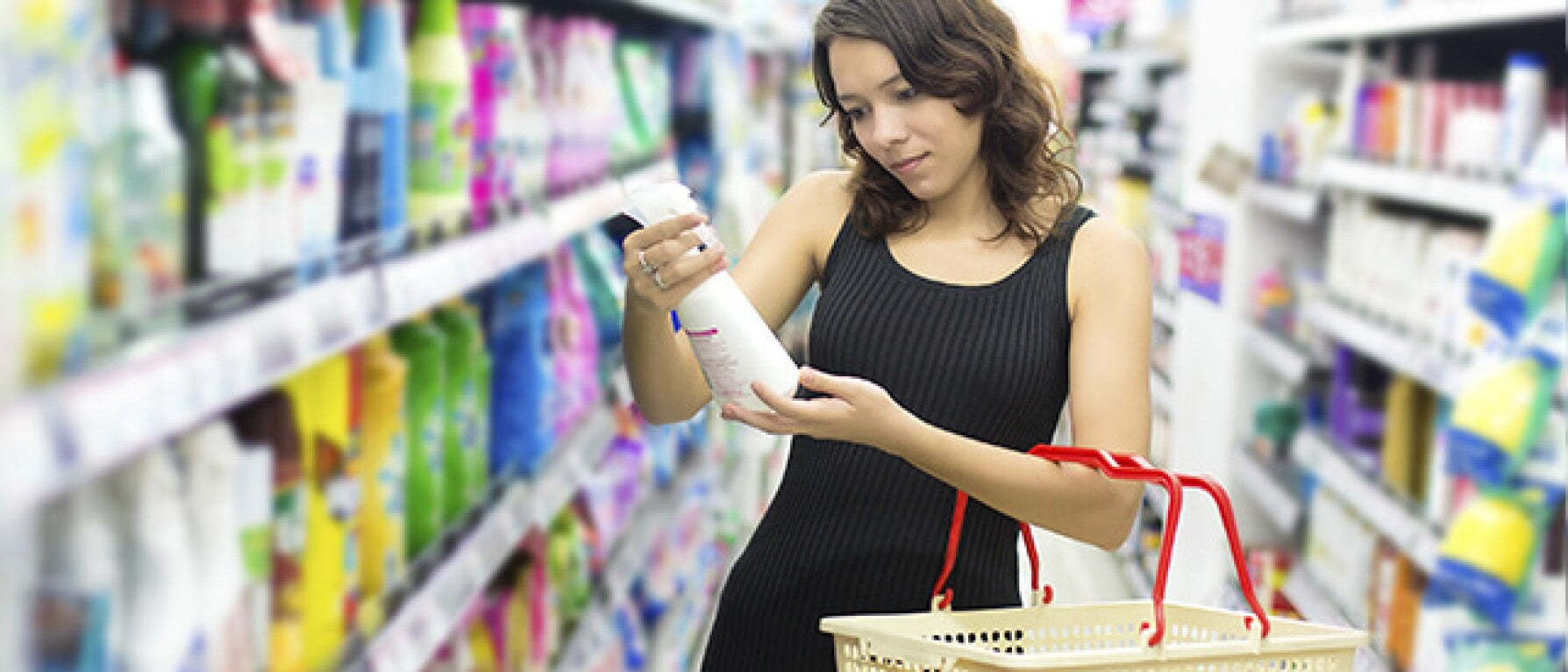You may have a clean home with shiny countertops and fragrant air—but, if you use standard cleaning products, at what cost? The chemicals you find in average household cleaning products are nothing to smirk at. In 2014, poison control centers in the United States served 2.2 million people who were exposed to dangerous chemicals—and household cleaners tied as the second leading type of exposure. In addition to acute poisoning, chronic exposure to chemicals in cleaning products can include the following:
1. Does the label say Warning or Danger? Danger is considered more harmful than Warning. Some products are safe enough to not require either of these labels.
2. Are there instructions on how to use the product? Be sure to follow them. Labels that say things like “may cause skin irritation” or “vapors harmful” should be taken seriously—wear gloves when handling and ventilate your home (opening the windows, if at all possible) to help reduce harmful vapors.
3. Are the claims specific? Labels like Biodegradable, Natural, or Non-Toxic are not regulated and don’t really mean anything—they are open for interpretation. In addition, Organic doesn’t necessarily mean safe; there are organic chemical substances that can release toxins and cause health issues. Look for more-specific claims, such as “biodegradable within 10 days” or “no phosphate.”
4. Are ingredients listed? If so, select the plant-based, rather than petroleum-based, product.
1. Baking soda: Absorbs odor and serves as an abrasive. To increase abrasion, add a bit of salt. Can be used to scrub sinks, pots, and pans.
2. Washing soda: Removes stains and oven grease.
3. White distilled vinegar: Cleans glass and removes soap scum and grease.
4. Hydrogen peroxide: Disinfects surfaces and can whiten clothes.
5. Castile soap: Mop floors, wash laundry, and clean countertops.
With these alternatives to standard, toxic cleaning products, you can still have shiny countertops and a fragrant home—without the chemical exposure and potential threat to your health.
*Editor’s Note: The information in this article is intended for your educational use only; does not necessarily reflect the opinions of the Chopra Center's Mind-Body Medical Group; and is not a substitute for professional medical advice, diagnosis, or treatment. Always seek the advice of your physician or other qualified health providers with any questions you may have regarding a medical condition and before undertaking any diet, supplement, fitness, or other health program.
- Asthma and other respiratory issues
- Cancer
- Allergies
- Reproductive and developmental problems
Product Safety: What to Look For
There are many safe, natural cleaning agents (such as those listed the following section) that can be cheap and effective. But sometimes they might not be quite as strong as you need them to be, or not quite as convenient as picking up a cleaning product at the store. If you need to buy a cleaning product, you can potentially determine its safety by looking it up through the Environmental Working Group, which rates the safety of more than 2,500 products. You can also pay attention to the labels. Unfortunately, labels are often vague; manufacturers are not required by law to disclose the ingredients. But you can ask yourself the following four questions to be as safe as possible.1. Does the label say Warning or Danger? Danger is considered more harmful than Warning. Some products are safe enough to not require either of these labels.
2. Are there instructions on how to use the product? Be sure to follow them. Labels that say things like “may cause skin irritation” or “vapors harmful” should be taken seriously—wear gloves when handling and ventilate your home (opening the windows, if at all possible) to help reduce harmful vapors.
3. Are the claims specific? Labels like Biodegradable, Natural, or Non-Toxic are not regulated and don’t really mean anything—they are open for interpretation. In addition, Organic doesn’t necessarily mean safe; there are organic chemical substances that can release toxins and cause health issues. Look for more-specific claims, such as “biodegradable within 10 days” or “no phosphate.”
4. Are ingredients listed? If so, select the plant-based, rather than petroleum-based, product.
5 Natural, Must-Have Cleaning Agents in Your Cupboard
If you don’t want to bother with labels and research, and want to be sure your cleaning products are completely natural, try the following natural agents the next time a countertop or floor needs to be cleaned. Tip: If you want to get rid of a smell, or add a bit of fragrance to your home, try adding a few drops of essential oil to the cleaning agent.1. Baking soda: Absorbs odor and serves as an abrasive. To increase abrasion, add a bit of salt. Can be used to scrub sinks, pots, and pans.
2. Washing soda: Removes stains and oven grease.
3. White distilled vinegar: Cleans glass and removes soap scum and grease.
4. Hydrogen peroxide: Disinfects surfaces and can whiten clothes.
5. Castile soap: Mop floors, wash laundry, and clean countertops.
With these alternatives to standard, toxic cleaning products, you can still have shiny countertops and a fragrant home—without the chemical exposure and potential threat to your health.
*Editor’s Note: The information in this article is intended for your educational use only; does not necessarily reflect the opinions of the Chopra Center's Mind-Body Medical Group; and is not a substitute for professional medical advice, diagnosis, or treatment. Always seek the advice of your physician or other qualified health providers with any questions you may have regarding a medical condition and before undertaking any diet, supplement, fitness, or other health program.

